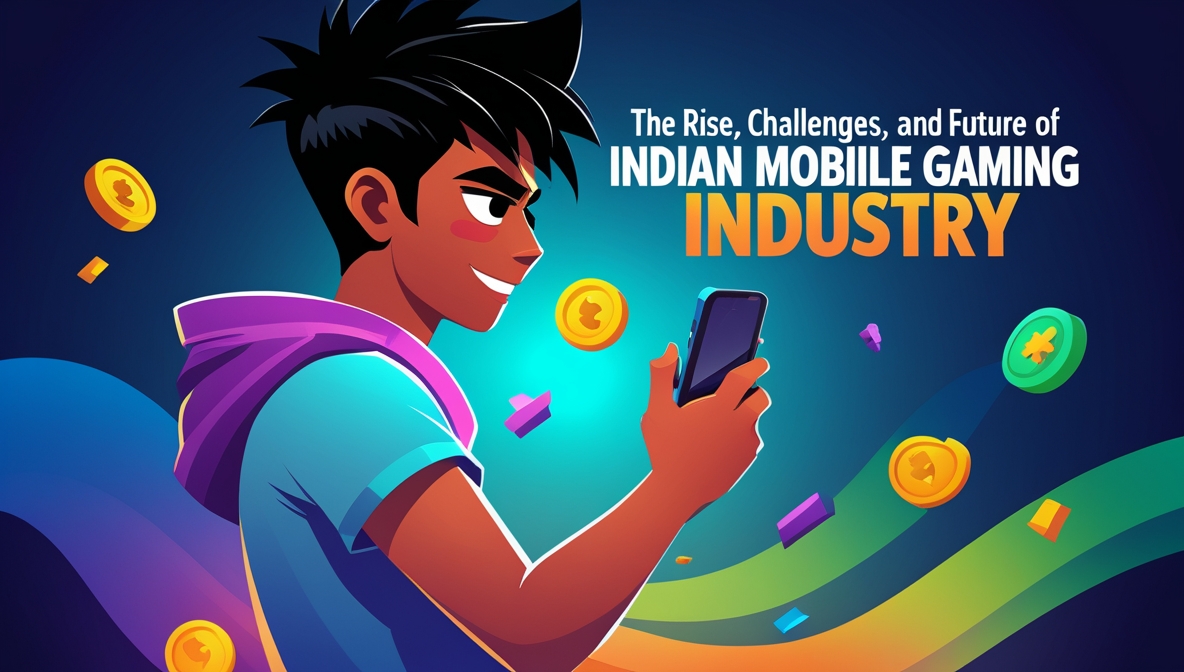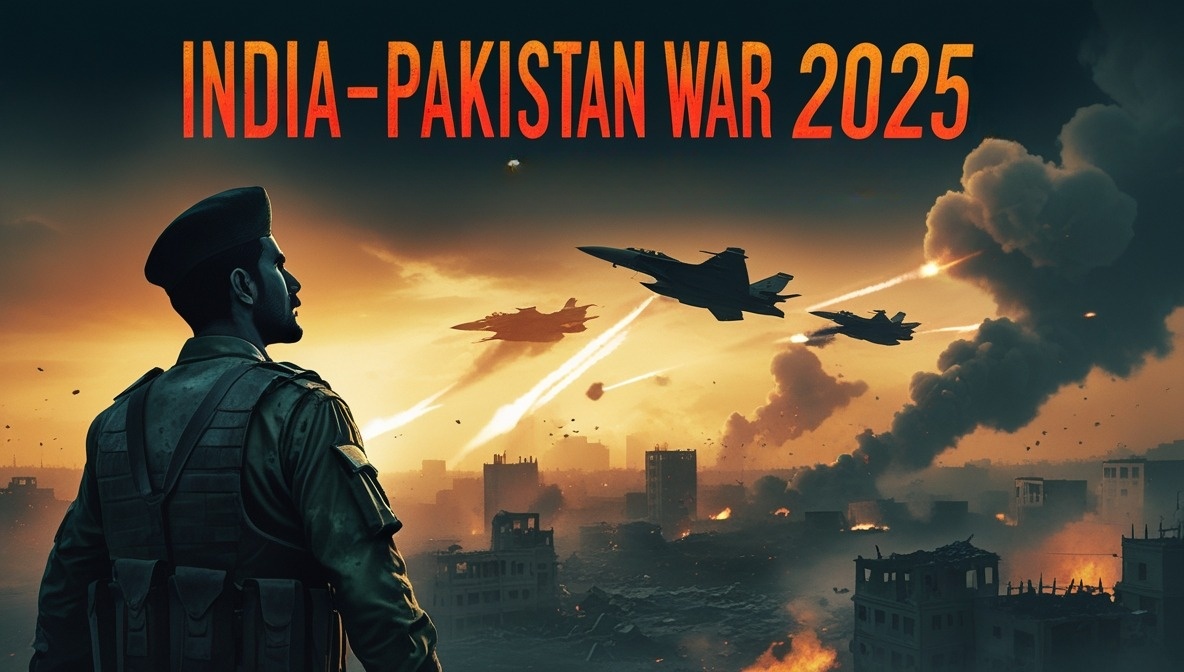Introduction
The Indian mobile gaming industry has transformed from a niche pastime into a global powerhouse, boasting over 568 million gamers as of 2023 and a market size of US$ 3.02 billion in 2024, projected to reach US$ 11 billion by 2033 (IMARC Group). Fueled by affordable smartphones, low-cost internet, and cultural phenomena like PUBG Mobile and Free Fire, India has become the world’s largest gaming market. However, challenges such as regulatory uncertainty, high taxation, and high-profile game bans have tested its resilience. As of May 2025, the industry continues to thrive, with localization, cloud gaming, and esports shaping its future. This blog explores the industry’s meteoric rise, the obstacles it faces, and its outlook for the years ahead.
The Rise of Indian Mobile Gaming
The Indian mobile gaming industry's ascent is a story of technological accessibility, cultural resonance, and economic opportunity. Below are the key drivers behind its growth:
Technological Advancements and Accessibility
The proliferation of affordable smartphones and high-speed internet has democratized gaming. By 2024, India had 659 million smartphone users, ranking second globally (IMARC Group). The cost of 1 GB of mobile data, at just US$ 0.26, is among the lowest worldwide, making online gaming accessible to both urban and rural populations (IBEF). The rollout of 5G, covering over 99% of India’s districts with 4.62 lakh base transceiver stations, has enhanced gaming experiences, enabling seamless multiplayer and cloud gaming (IMARC Group). In 2021, mobile gaming apps accounted for 86% of total gaming apps, with a 22% rise in adoption (Wikipedia).
Cultural Phenomenon and Popular Games
Games like PUBG Mobile, launched in 2018, became cultural phenomena, amassing 175 million downloads by January 2020, representing 24% of its global player base (Medium). Its battle royale gameplay and realistic graphics fueled esports tournaments and a massive fan base. Similarly, Ludo King surpassed 100 million downloads, appealing to casual gamers, while Free Fire became a favorite among midcore players. These games have created a vibrant gaming culture, with 41% female gamers and 66% from non-metro areas by 2023 (Wikipedia). By FY22, midcore games generated US$ 550 million in revenue, growing at 32% (IBEF).
Economic Growth and Investment
The industry's revenue grew from US$ 1.5 billion in 2019–20 to US$ 2.6 billion in FY22, with projections to reach US$ 8.6 billion by FY27 (IBEF). Real money gaming (RMG) accounted for 57% of revenue in FY22, but in-app purchases are expected to grow at a 34% CAGR through FY27. Over the last five years, gaming companies raised US$ 2.8 billion, a 380% increase from 2019, fueling unicorns like Dream11 (valued at US$ 2.3 billion) and Mobile Premier League (MPL) (valued at US$ 950 million). Between FY20 and FY24, the industry attracted INR 22,931 crores (US$ 2.7 billion) in investments, employing over 100,000 individuals (Wikipedia).
Esports and Content Creation
Esports has emerged as a significant growth driver, with viewership soaring to over 80 million in 2023, an 83% increase from two years prior (IBEF). The number of professional gamers is projected to reach 1,250 by 2028, supported by government recognition of esports as a sport, including its inclusion in the 2023 Asian Games. Gaming content creation on platforms like YouTube has flourished, with 100 million active gaming users and top streamers earning approximately US$ 1 million annually. Over 17 Indian gaming YouTubers have more than a million followers (Aakash G).
Government Support
The Indian government has launched initiatives like the Digital Gaming Research Initiative by SERB and the AVGC Promotion Task Force, aiming to capture 5% of the global gaming market (US$ 40 billion) by 2025, creating 160,000 jobs (IBEF). Policies like Digital India and 100% FDI allowance have attracted foreign investment. Educational initiatives, such as the Smart India Hackathon and collaborations with IIT Bombay, are fostering talent development.
Demographic and Market Trends
India's young, digitally native population (46% under 25) is a key driver. By FY22, there were 507 million gamers, including 120 million paying users, growing at a 25% CAGR (IBEF). Gamers spend an average of 10–12 hours per week playing, with top midcore games like Free Fire averaging 109 minutes per user daily. Localization is a growing trend, with developers creating games in regional languages like Hindi, Tamil, and Telugu. A 2024 survey indicated that 70% of businesses believe localized content will be crucial for growth in 2025 (IMARC Group).
| Key Metrics of Growth | Details |
|---|---|
| Market Size (2024) | US$ 3.02 billion, projected to reach US$ 11 billion by 2033 (CAGR 15.50%) |
| Gamers (2023) | 568 million, 41% female, 66% non-metro |
| Downloads (Q3 2020) | 7.4 billion, 17.6% of global downloads in 2021 |
| Investment (FY20-FY24) | INR 22,931 crores (US$ 2.7 billion) |
| Jobs (2023) | 100,000, projected 250,000 by 2025 |
Challenges Faced by the Industry
While the industry has not experienced a true “fall,” it has faced significant challenges that have disrupted its growth trajectory:
Regulatory Uncertainty
The lack of a unified regulatory framework creates operational challenges. Laws defining skill, gambling, data protection, and taxing gaming earnings remain under discussion. For example, Karnataka’s online gambling law, enacted on October 5, outlawed all forms of online gaming involving money transfer, creating uncertainty for companies (STPI). Varying state regulations, such as bans on wagering games in Andhra Pradesh and Telangana, further complicate the landscape (Drishti IAS). The IT (Intermediary Guidelines and Digital Media Ethics Code) Rules 2021 provide a framework, but the implementation of self-regulatory bodies remains pending.
Taxation Concerns
In 2023, a 28% Goods and Services Tax (GST) was imposed on the total face value of bets in online gaming, raising concerns about the sustainability of smaller startups (Drishti IAS). Larger companies like Dream11 are better equipped to absorb this burden, but the tax could stifle innovation among smaller players.
Game Bans
The September 2020 ban on PUBG Mobile, along with 58 other Chinese apps, was a major setback due to data security concerns (Medium). With 175 million users, the ban disrupted the industry and disappointed players. State-level bans, such as Gujarat’s temporary ban on PUBG Mobile in 2019 (lifted post-exam season) and Andhra Pradesh's 2020 ban on wagering games, added further complexity.
Social and Cultural Concerns
Debates over gaming addiction, particularly among younger players, have led to increased scrutiny. The Gujarat ban on PUBG Mobile was partly driven by concerns about its impact on students. Public sentiment around addiction and data security has influenced policy decisions, potentially leading to stricter regulations (Drishti IAS).
Need for Policy and Capability Building
The sector requires a combination of policy, capability building, and thought leadership to drive sustainable growth. India needs to create a favorable investment environment to nurture the gaming ecosystem (STPI). Additionally, there is a need for increased investment in AVGC (Animation, Visual Effects, Gaming, and Comics) education, with only 139 colleges offering relevant courses, most of which are theoretical rather than industry-focused (OLIBR).
| Key Challenges | Impact |
|---|---|
| Regulatory Uncertainty | Fragmented state laws create operational uncertainty |
| 28% GST (2023) | Threatens sustainability of smaller startups |
| Game Bans | PUBG Mobile ban disrupted 175 million users |
| Addiction Concerns | Increased scrutiny may lead to stricter regulations |
| Policy Needs | Lack of unified policy hinders sustainable growth |
Current State and Future Outlook (2025)
As of May 2025, the Indian mobile gaming industry remains robust, with strong growth projections and adaptive strategies:
Market Size and Growth
The market is expected to reach US$ 6–7 billion in 2025, up from US$ 3.02 billion in 2024, with some estimates projecting US$ 11 billion by 2033 at a CAGR of 15.50% (IMARC Group). India leads globally in mobile game downloads, with 825 million in August 2021, accounting for 17.6% of worldwide downloads (Business Standard). Disposable income has risen, reaching INR 305 million in 2024 from INR 296 million in 2023, further fueling spending on gaming.
User Base and Engagement
With 568 million gamers, the industry enjoys a diverse user base. Women spend 11.2 hours per week gaming, compared to 10.2 hours for men, indicating growing female participation (Business Standard). Gamers average 10–12 hours weekly, with high engagement in midcore games.
Localization
Localization is a significant trend, with developers creating games in regional languages like Hindi, Tamil, and Telugu. A 2024 survey found that 70% of businesses believe localized content will be crucial for growth in 2025 (IMARC Group). By incorporating local themes and stories, developers are increasing player retention and broadening their reach across India’s diverse linguistic landscape.
Cloud Gaming
Cloud gaming is gaining momentum, enabling high-quality gaming experiences on mobile devices without expensive hardware. With over 99% of India Symphonic’s districts covered by 5G networks, cloud gaming is set to become a major trend, as seen in partnerships like Vodafone Idea with CareGame for a new cloud gaming platform in April 2024 (IMARC Group).
Esports
Esports viewership reached 80 million in 2023, with professional gamers expected to grow to 1,250 by 2028 (IBEF). Notable developments include Garena’s re-launch of Free Fire in India in April 2024, with servers shifted to Mumbai, and realme’s collaboration with KRAFTON India for the BATTLEGROUNDS MOBILE INDIA PRO series in January 2025 (IMARC Group).
Investment and Employment
The industry has attracted INR 22,931 crores (US$ 2.7 billion) between FY20 and FY24, employing over 100,000 individuals, with projections for 250,000 jobs by 2025 (Wikipedia). Recent investments include nearly US$ 1 billion in the last six months of 2021 alone (STPI).
Monetization and Platforms
In-app purchases dominate monetization due to their affordability, while Android remains the leading platform due to its accessibility. Strategy games, driven by esports popularity (e.g., Clash of Clans, PUBG Mobile), are the largest game type (IMARC Group).
Latest Developments
- January 2025: realme collaborates with KRAFTON India for BATTLEGROUNDS MOBILE INDIA PRO series.
- October 2024: SuperGaming launches Indus Battle Royale on Android and iOS.
- August 2024: JetSynthesys’ Nautilus Mobile partners with IPL teams for Real Cricket.
- June 2024: Nazara Publishing and nCore Games collaborate on FAU-G Domination.
- April 2024: Vodafone Idea partners with CareGame for a new cloud gaming platform (IMARC Group).
Conclusion
The Indian mobile gaming industry has not experienced a true “fall” but has navigated significant challenges that have shaped its growth. Its rise, driven by affordable technology, a massive user base, and cultural phenomena like PUBG Mobile, has positioned India as the world’s largest gaming market with 568 million gamers. Economic contributions, including US$ 2.8 billion in investments and 100,000 jobs, underscore its potential.
Challenges such as regulatory ambiguity, high taxation, and game bans have tested the industry’s resilience. However, adaptations like Battlegrounds Mobile India (BGMI) and a focus on localization have kept growth on track. As of 2025, the industry is projected to reach US$ 6–7 billion, with esports, cloud gaming, and localization driving future expansion.
To sustain this growth, addressing regulatory ambiguity and taxation concerns will be crucial. With continued innovation and policy support, the Indian mobile gaming industry is poised to remain a global leader, balancing its remarkable rise with the challenges it faces.
Key Takeaways
- Massive Growth: India’s 568 million gamers make it the world’s largest gaming market, with a projected US$ 6–7 billion market size in 2025.
- Cultural Impact: Games like PUBG Mobile and Free Fire have shaped a vibrant gaming culture, boosting esports and content creation.
- Economic Boom: Investments of US$ 2.8 billion and 100,000 jobs highlight the industry’s economic significance.
- Challenges Persist: Regulatory uncertainty, 28% GST, and game bans pose hurdles, though the industry adapts.
- Future Bright: Localization, cloud gaming, and esports are key trends, but regulatory clarity is needed for sustained growth.
Citations
- Video Games in India - Wikipedia
- The Rise and Fall of PUBG Mobile in India
- India's Booming Gaming Industry | IBEF
- India's Nascent Gaming Industry On The Rise | IBEF
- India's Flourishing Gaming Industry - Drishti IAS
- India Mobile Gaming Market Size & Forecast 2033
- India Games Market Report - Niko Partners
- India's Thriving Gaming Market | IBEF
- The Rise of the Indian Gaming Market - Deep Dive
- Millions Hooked to Mobile Games, India to Become $7 Bn Market by 2025
- India's Mobile Gaming Market Set to Hit $7 Billion by 2025
- The Future of Game Development in India


